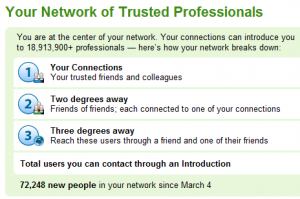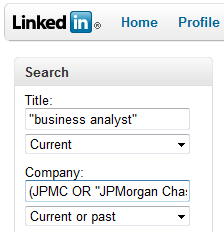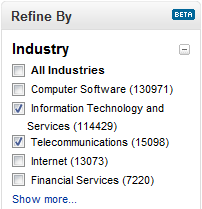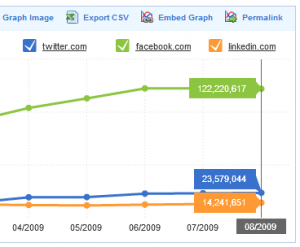 I wrote about how I learned to use Boolean search to leverage information systems to quickly source candidates, and I challenged the concept and practice of building candidate pipelines.
I wrote about how I learned to use Boolean search to leverage information systems to quickly source candidates, and I challenged the concept and practice of building candidate pipelines.
Amybeth Hale commented on my post (thank you – you inspired me to finally write this one!) and mentioned that she was puzzled by the mention of the fact that I never pipelined candidates. I’ve literally never had to. Not for the rarest skillset, the most challenging under-market compensation, the highest security clearance, 3rd shift, 100% travel – I’ve successfully recruited for these and more from scratch. Honestly, I’ve never known any other way.
Amybeth feels that my experience may be somewhat unique and this might not be replicable by other sourcers, recruiters, or recruiting organizations. I’ll agree on the first part – that my experience may be uncommon – I’m undeniably a product of the specific environment and circumstances under which I entered the recruiting industry. However, I have to respectfully disagree on the second part. I won’t apologize for it (nor would Amybeth want me to), because professional debate is a good thing, and we should all welcome it! There’s no critical thought or learning involved if we all agree on everything.
On the surface, pipelining candidates and building candidate inventories seems to be just plain and simple common sense. However, sometimes what just “feels right” may in fact not actually be the most effective and efficient method of doing a thing.
Thomas Edison (I’m a fan) once said, “There is always a better way.” My goal has always been to find it. Whether it comes to quickly finding great candidates, creating voicemail and email techniques to get the non-job seeker to respond, developing candidate closing and control techniques, implementing effective time and activity management, etc. – I want to be using the BEST possible way to do a thing. Don’t you?
Keep an Open Mind
I know I am in the minority in my view of candidate pipelining – I’m going to ask you (most likely in the majority) to have an open mind and not just simply “stick to your guns” and what you know/what you’ve been taught. If you are a passionate candidate pipeliner and you’ve built a successful career around that practice – congratulations!
However, be aware that there are other ways to be successful in recruiting, and they might actually be more efficient and/or effective. You’re reading the words of someone who’s been highly productive and successful without ever having to pipeline a single candidate, I’ve never had the benefit of a hiring forecast, and I’ve outperformed all candidate pipeliners I’ve worked with head-to-head on the same positions consistently – even when they’ve had a head start!
How was I able to do this? That’s the good part – there’s a science of sorts behind the success, and it IS trainable and replicable.
Get ready for a paradigm shift – I’m going to move your cheese. Continue reading →
 So you know how to X-Ray LinkedIn, and perhaps you even know how to target current titles with an X-Ray string. However, did you know that you’re not finding all of the available matches within LinkedIn using this technique?
So you know how to X-Ray LinkedIn, and perhaps you even know how to target current titles with an X-Ray string. However, did you know that you’re not finding all of the available matches within LinkedIn using this technique? You’re on LinkedIn – congratulations!
You’re on LinkedIn – congratulations! The other day I came across an
The other day I came across an 
 After recently writing about
After recently writing about  I’m very much an anti-hype, anti-bandwagon person.
I’m very much an anti-hype, anti-bandwagon person. Now that we are on our way into exploring the new year, I’ve seen some articles on what’s coming next for the recruiting industry this year, and even as far out as
Now that we are on our way into exploring the new year, I’ve seen some articles on what’s coming next for the recruiting industry this year, and even as far out as  Recently, I wrote about
Recently, I wrote about  Do you ever use social networks to such as LinkedIn to search for people with experience in a specific industry?
Do you ever use social networks to such as LinkedIn to search for people with experience in a specific industry?

 In
In  LinkedIn’s been busy.
LinkedIn’s been busy. I wrote about
I wrote about  When it comes to my theories and best practices for leveraging information systems for quickly finding highly qualified candidates, I am often asked, “So, how did you figure all of this stuff out?”
When it comes to my theories and best practices for leveraging information systems for quickly finding highly qualified candidates, I am often asked, “So, how did you figure all of this stuff out?” When I deliver presentations on how to leverage LinkedIn to source candidates, I have the opportunity to get a sense of what most people seem to know about using LinkedIn. Recently I have been making it a point to ask how people tend to sort their search results when searching LinkedIn, and the overwhelming majority leave their results sorting at the default value, which is “relevance.”
When I deliver presentations on how to leverage LinkedIn to source candidates, I have the opportunity to get a sense of what most people seem to know about using LinkedIn. Recently I have been making it a point to ask how people tend to sort their search results when searching LinkedIn, and the overwhelming majority leave their results sorting at the default value, which is “relevance.” In response to my recent post about
In response to my recent post about  This question has been burning in my mind for quite some time – why is it that so many ATS/recruiting CRM vendors offer poor or limited candidate search functionality? I’m not talking about ATS vendors you’ve never heard of – I’m talking about some of the biggest names in Applicant Tracking/Candidate Relationship Management applications.
This question has been burning in my mind for quite some time – why is it that so many ATS/recruiting CRM vendors offer poor or limited candidate search functionality? I’m not talking about ATS vendors you’ve never heard of – I’m talking about some of the biggest names in Applicant Tracking/Candidate Relationship Management applications.